Magazines & Bulletins
Ordering Information
Copies of these issues are available by mail from the Louisiana Sea Grant Communications Office, 101 Sea Grant Building, Louisiana State University, Baton Rouge, LA 70803, 225-578-6448 or by contacting Roy Kron.
Coastal Clips
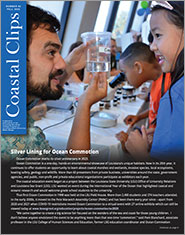 Latest Edition: Fall 2023
Latest Edition: Fall 2023
- Silver Lining for Ocean Commotion
- Plumlee New Fisheries Specialist
- New Education Coordinator Begins at Louisiana Sea Grant
- Engagement Coordinator Starts
- Black Joins LSG Education Team
- Three Louisiana Knauss Fellowship Finalists Announced
- Sea Grant Funds LaSSO Project
- First Van Lopik Scholarship Recipients Awarded
- Grant Extends Wetland Days Programming
- AOC Economics Study Finds Scale and Marketing Challenges
Go to Past Issues of Coastal Clips >
Lagniappe Fisheries Newsletter
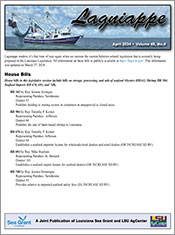 Latest Edition: April 2024
Latest Edition: April 2024
- House Bills
- House Concurrent Resolutions
- Senate Bills
- LDWF Is Announcing the Launch of the New Marine Aquaculture Grant Program Under 2019 Flood Disaster Assistance Funding
- LDWF Commercial Fishing License and Trip Ticket Staff Announce Locations and Dates
- Shrimp Season to Open in a Portion of State Outside Waters on April 4
- Reminder Upcoming Oyster Season Closures for the 2023-2024 Public Oyster Season
- Interior Department Proposes Second Offshore Wind Sale in Gulf of Mexico
- Louisiana Shrimp Watch
- The Gumbo Pot – Blackened Grouper with Creole Mayonnaise
Go to more issues of Lagniappe >
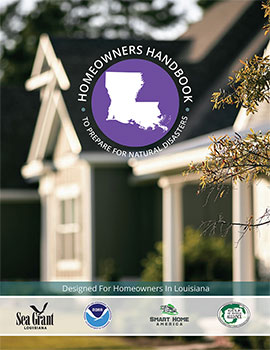 Louisiana Homeowners Handbook to Prepare for Natural Hazards
Louisiana Homeowners Handbook to Prepare for Natural Hazards
This handbook was created to help you prepare for natural hazards so that risks to family and property may be reduced. While it is never possible to eliminate all potential damage from a natural hazard, as a homeowner you can take action and implement many small and cost-effective steps that could significantly lower your vulnerability. Mother Nature can be intense. Your family and home deserve protection that only you can provide.
Go to La Homeowners Handbook to Prepare for Natural Hazards >
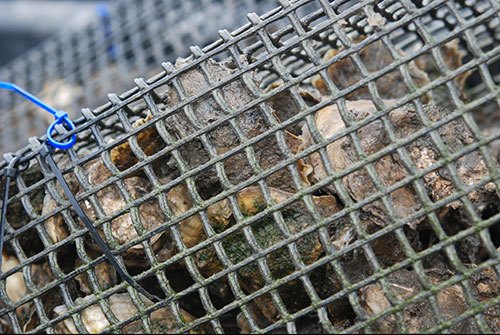 Economic Analysis of Alternative Oyster Culture (AOC) in Louisiana
Economic Analysis of Alternative Oyster Culture (AOC) in Louisiana
In January 2023, Louisiana Sea Grant commissioned Daniel Petrolia, Laborde Endowed Chair, to conduct an economic analysis of the Alternative Oyster Culture sector, and to assess its feasibility in terms of existing and future economic capacity. The results of Petrolia’s study indicate a number of challenges – especially in the areas of production scale (farm size) and market potential.
View Economic Analysis of Alternative Oyster Culture (AOC) in Louisiana >
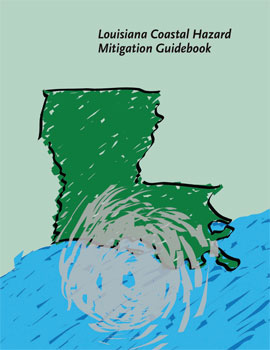 Louisiana Coastal Hazard Mitigation Guidebook
Louisiana Coastal Hazard Mitigation Guidebook
The Louisiana Coastal Hazard Mitigation Guidebook outlines strategies to reduce, but not eliminate, the risks from coastal natural hazards such as storm surge, other flooding, subsidence and sea level rise, and approaches that are designed to serve as an extra layer of protection or an additional line of defense from those hazards. The guidebook also demonstrates how communities can adopt a flexible approach to hazard planning and accommodate a wide range of attitudes toward restrictions on the use of property to mitigate hazards.
Go to La Coastal Hazard Mitigation Guidebook >
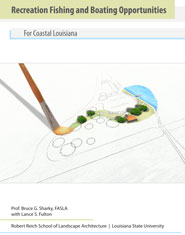 Recreational Fishing and Boating Opportunities
Recreational Fishing and Boating Opportunities
In recent years, Hurricanes Katrina, Rita and Ike caused significant damage in many southern Louisiana communities. Along with this damage came initial and long-term economic loss. One approach to spur economic development in these areas is to provide sites and facilities which provide access to the communities’ diverse and beautiful natural environments. Through Louisiana State University’s AgCenter, area agricultural agents contacted the university’s Robert Reich School of Landscape Architecture to request the production of several pilot project designs for recreational fishing and boating access. These designs provide examples of how, with a limited budget, a community can provide tourists and residents with access to local waterways and coastal environments. With a focus on recreational boating and fishing access, the designs aim to draw tourists to the communities, along with money to the local economies. The designs are to serve as demonstrations; they are not for construction purposes.
View Recreational Fishing and Boating Opportunities >
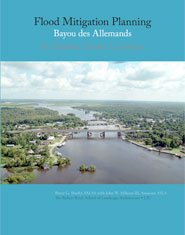 Flood Mitigation Planning: Bayou des Allemands
Flood Mitigation Planning: Bayou des Allemands
During tropical storm events in the region, Des Allemands and adjacent St. Charles Parish are subject to flooding. The parish department of public works erects temporary protection, however there is the need for a long-term, more permanent solution. Several ideas have been suggested and evaluated by the parish, all costly and beyond its financial means. Additionally, the US Army Corps of Engineers is considering a regional solution. However, construction is projected sometime in the future. So the parish is considering the feasibility of an effective, short-term solution. Several alternatives have been proposed and evaluated, and the following publication summarize the various alternative flood mitigation measures and recommends a course of action.
View Flood Mitigation Planning: Bayou des Allemands >
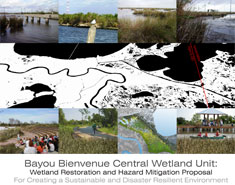 Bayou Bienvenue Central Wetland Unit: Wetland Restoration and Hazard Mitigation Proposal for Creating a Sustainable and Disaster Resilient Environment
Bayou Bienvenue Central Wetland Unit: Wetland Restoration and Hazard Mitigation Proposal for Creating a Sustainable and Disaster Resilient Environment
Reconstruction of the St. Bernard Parish cypress swamp and marshes is among the most effective approaches to mitigating seasonal storms while insuring the integrity of existing storm protection infrastructure, such as levees. This report provides the background, rationale and process for rebuilding the marsh and swamp habitats within the Bayou Bienvenue Central Wetlands Area.
View Bayou Bienvenue Central Wetland Unit >
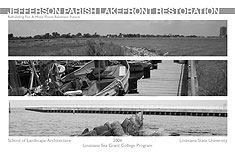 Jefferson Parish Lakefront Restoration
Jefferson Parish Lakefront Restoration
Hurricane Katrina made landfall in late August 2005 followed four weeks later by Hurricane Rita. Flood and wind damage occurred along much of the Gulf of Mexico coast, including southern Louisiana. This report, developed by Louisiana State University senior landscape architecture students working with the East Jefferson Parish Levee Board, contains proposals for providing storm protection along Lake Pontchartrain by rebuilding wetlands and coastal marsh where both existed prior to urban development in the Bucktown and surrounding neighborhoods.
View Jefferson Parish Lakefront Restoration >
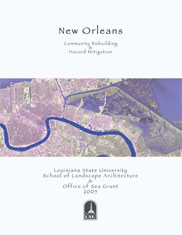 New Orleans Community Rebuilding & Hazard Mitigation
New Orleans Community Rebuilding & Hazard Mitigation
Following Hurricanes Katrina and Rita, faculty and senior landscape architecture students at Louisiana State University decided to research and cultivate appropriate strategies for rebuilding New Orleans, with an emphasis on developing non-structural and land use plans. Each student selected an area or neighborhood in the New Orleans area to focus on in greater depth. The following document contains a summary of the work accomplished by the students.
View New Orleans Community Rebuilding & Hazard Mitigation >
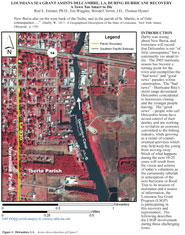 A Town Too Smart to Die
A Town Too Smart to Die
Louisiana Sea Grant Assists Delcambre, La., During Hurricane Recovery
In September 2005, Hurricane Rita pushed a 10-foot storm surge into the town of Delcambre and across surrounding agricultural fields. The surge flooded all but 25 of the 903 structures in the town’s corporate limits. With the assistance of Louisiana Sea Grant, a recovery steering committee composed of community members drafted a business plan to revitalize the local economy by filling a niche for a working waterfront that will support the fishing industry between Intracoastal City and Morgan City. The following report outlines the committee’s objectives as well as obstacles which need to be overcome.
View A Town Too Smart to Die >
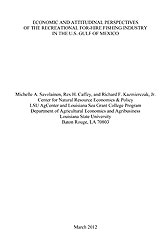 Socioeconomic Study of the Recreational For-Hire Fishing Industry in the U.S. Gulf of Mexico
Socioeconomic Study of the Recreational For-Hire Fishing Industry in the U.S. Gulf of Mexico
Final Report, April 2012
Coastal communities in the U.S. Gulf of Mexico depend on marine recreational and commercial fishing for employment, income, and tourism. Despite the sizeable catch and participation rates for recreational fishing, most fisheries economics research focuses on the commercial sector, for which more verifiable data are available. Commercial landings totaled 1.4 billion pounds with an estimated dockside value of $629 million in the Gulf in 2009 (Annual Commercial Landings Statistics 2010). Recreational anglers, including 2.8 million Gulf states residents, made 23 million trips and caught 173 million fish in the Gulf in 2009 (Fisheries of the United States 2010). One important part of the recreational sector is the recreational for-hire (RFH) industry.
View Socioeconomic Study of the Recreational For-Hire Fishing Industry in the U.S. Gulf of Mexico >
